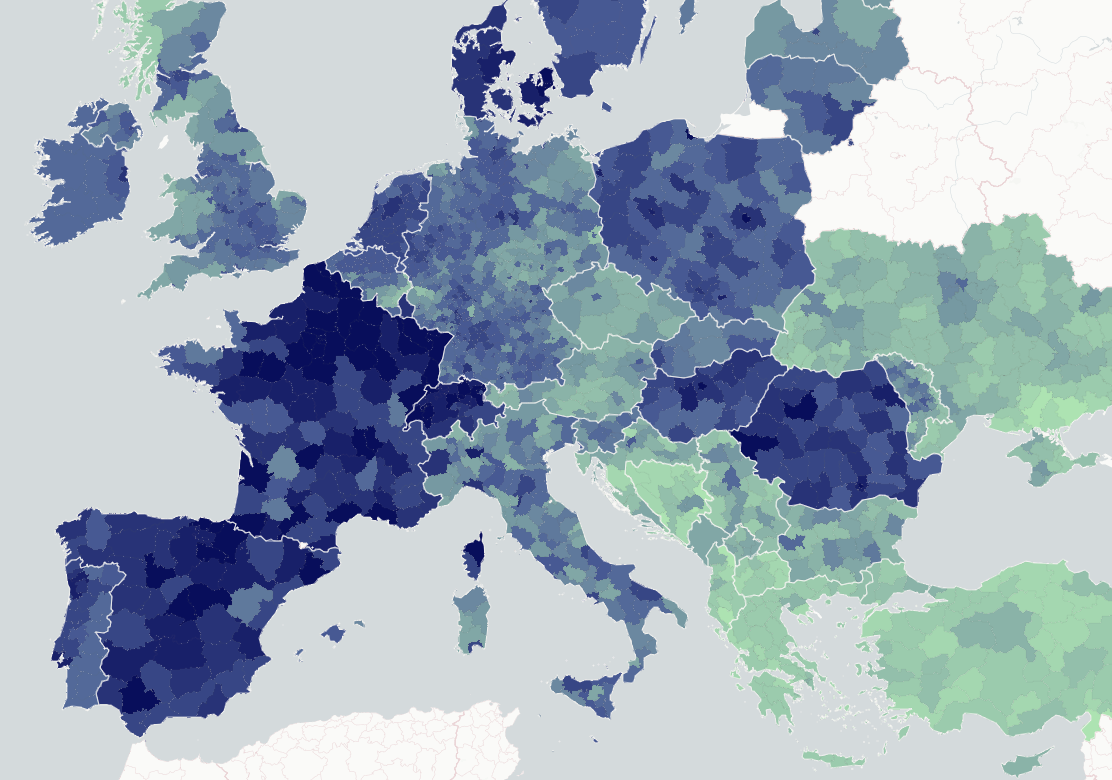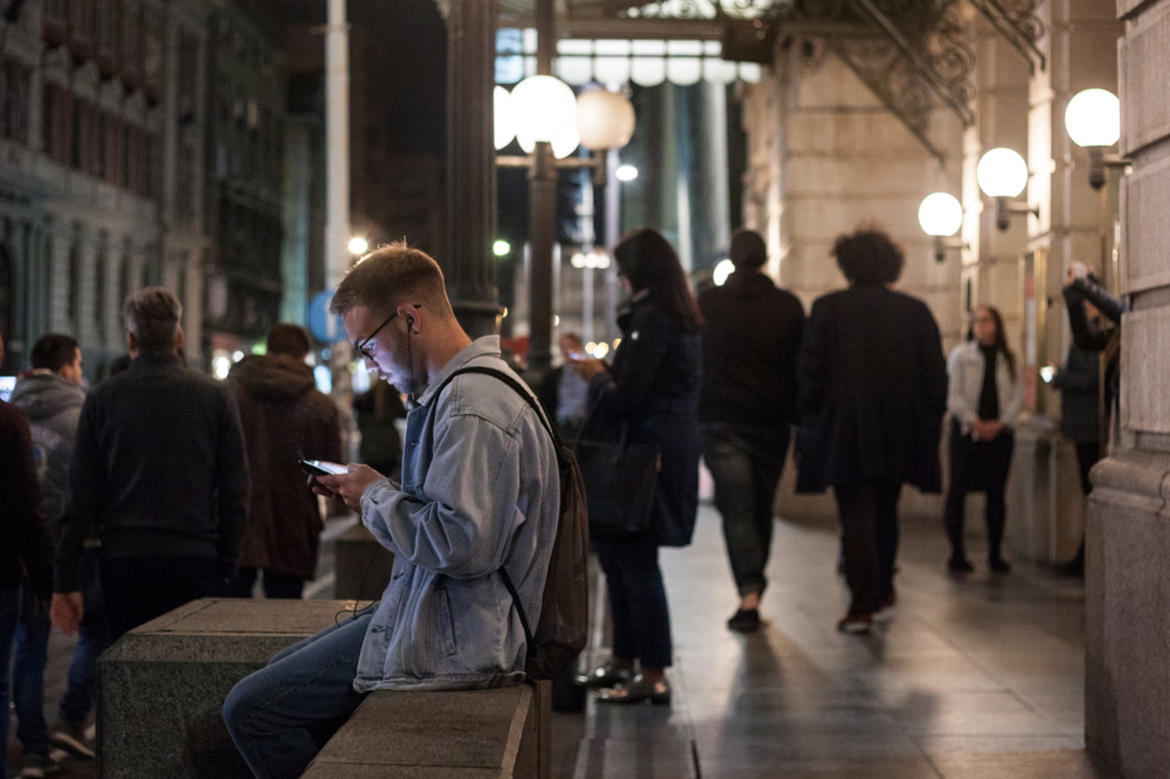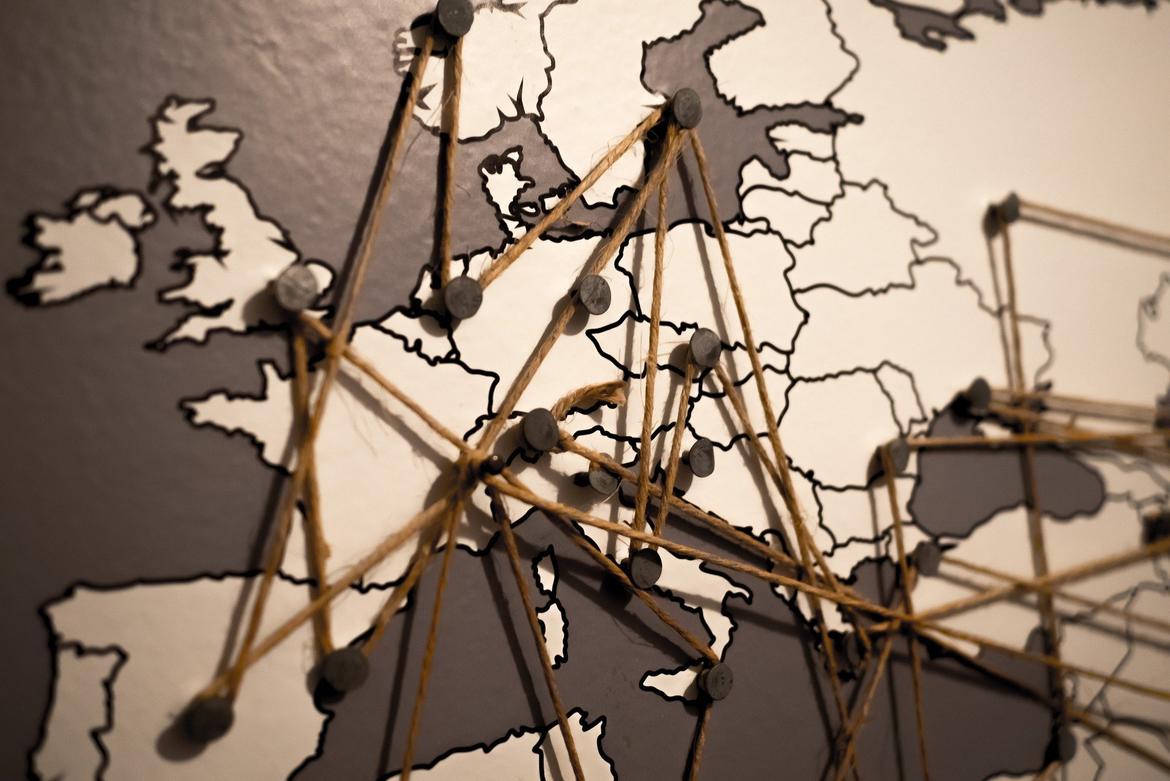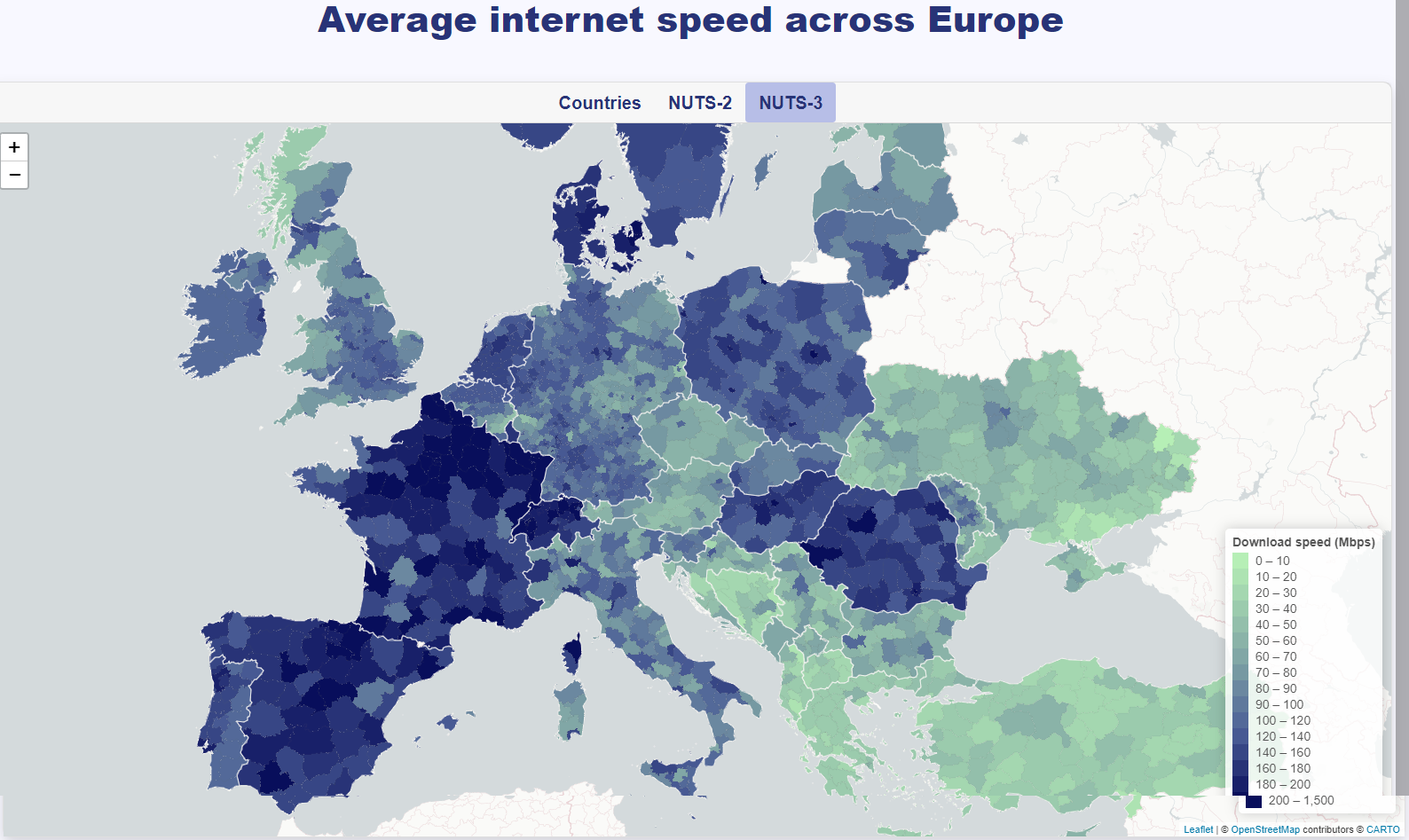Internet speed in Europe

Internet-Speed-in-Europe
The Broadband Europe connectivity goals for 2025 are ambitious: 1 Gigabit per second (Gbps) for the main socio-economic drivers, 5G coverage for all urban areas and major terrestrial transport paths, 100 Megabit per second for all European households. With the targets for the Digital Decade, the Commission went even so far as to set an objective of full Gigabit coverage by 2030.
But how are European countries and cities actually performing? The European Data Journalism Network has used data from Ookla performance tests to shape an interactive map that you can explore and use to make comparisons within and across countries and regions.
Main findings:
- In 2020, in several countries, a significant percentage of municipalities had a connection slower than 30 Mbps. In France, Italy and Latvia this percentage was just over 50%. Czech Republic and Slovakia reached 65.4% and 70.1%, respectively, with peaks coming close to complete coverage in Cyprus (85%), Croatia (89.2%) and Greece (93.2%).
- The speed performance is directly related to the development of the infrastructure. As for the Very High Capacity Network (VHCN) – an infrastructure that includes fiber-optics and other technologies, and is needed to reach the goal of universal 1 Gbps by 2030 – the European average coverage in 2019 was 44%.
- Behind these figures lie large disparities, both between individual countries and between urban and rural areas.
- Internet performance in Europe has improved dramatically between 2020 and 2021. Average fixed line download speeds have increased by more than half (+51.9 percent), from 68 Megabits per second (Mbps) in March 2020 to 103.3 Mbps in June 2021. Over the same period, upload speeds increased by 44 percent, from 32 to 46.2 Mbps. Unfortunately, the gap between urban and more rural areas, and between north European countries and those in the south-east, has also grown.
Stories
The Balkan countries are struggling to keep up with the rest of Europe in terms of Internet connection speed. The only exception is Romania, which - not surprisingly - is the country in the area that is best able to spend cohesion funds on ICT
August 24, 2022
The cost of a good internet connection varies widely within the European Union, with countries around the Adriatic paying the most. Meanwhile, Romania, with a world-class network and competitive prices, is a case apart.
October 22, 2021
Over the last year and a half internet speeds in Europe have increased by more than fifty percent. Unfortunately, the gap between urban and more rural areas, and between north European countries and those in the south-east, has also grown.
September 22, 2021
The road towards universally accessible ultra-fast connectivity in Europe still seems long and bumpy.
March 25, 2021
The data unit
 Ornaldo Gjergji (OBC Transeuropa, coordinator) is a European data journalist. He is specialised in philosophy and international relations: ethics, human rights and armed conflicts.
Ornaldo Gjergji (OBC Transeuropa, coordinator) is a European data journalist. He is specialised in philosophy and international relations: ethics, human rights and armed conflicts.






